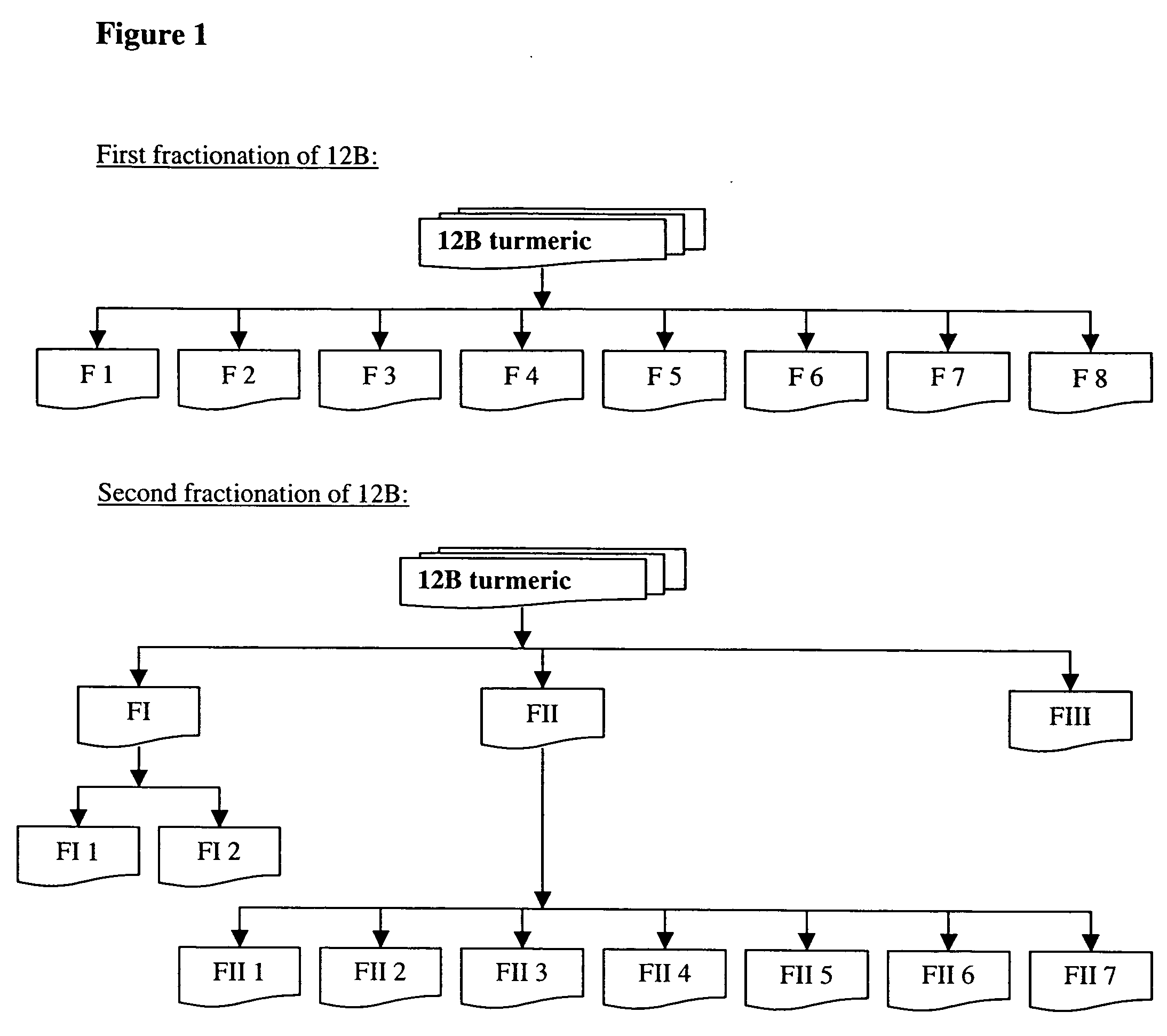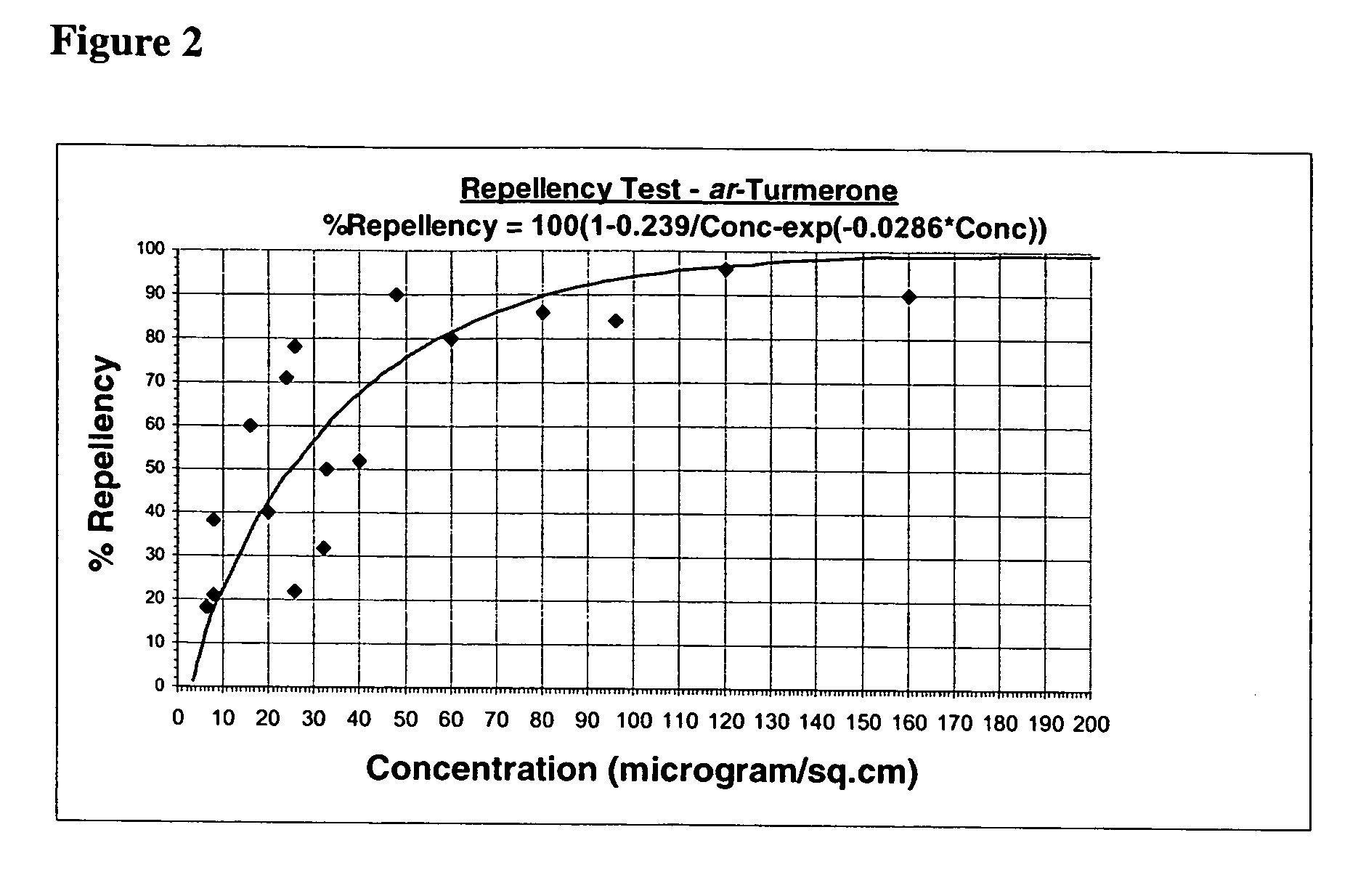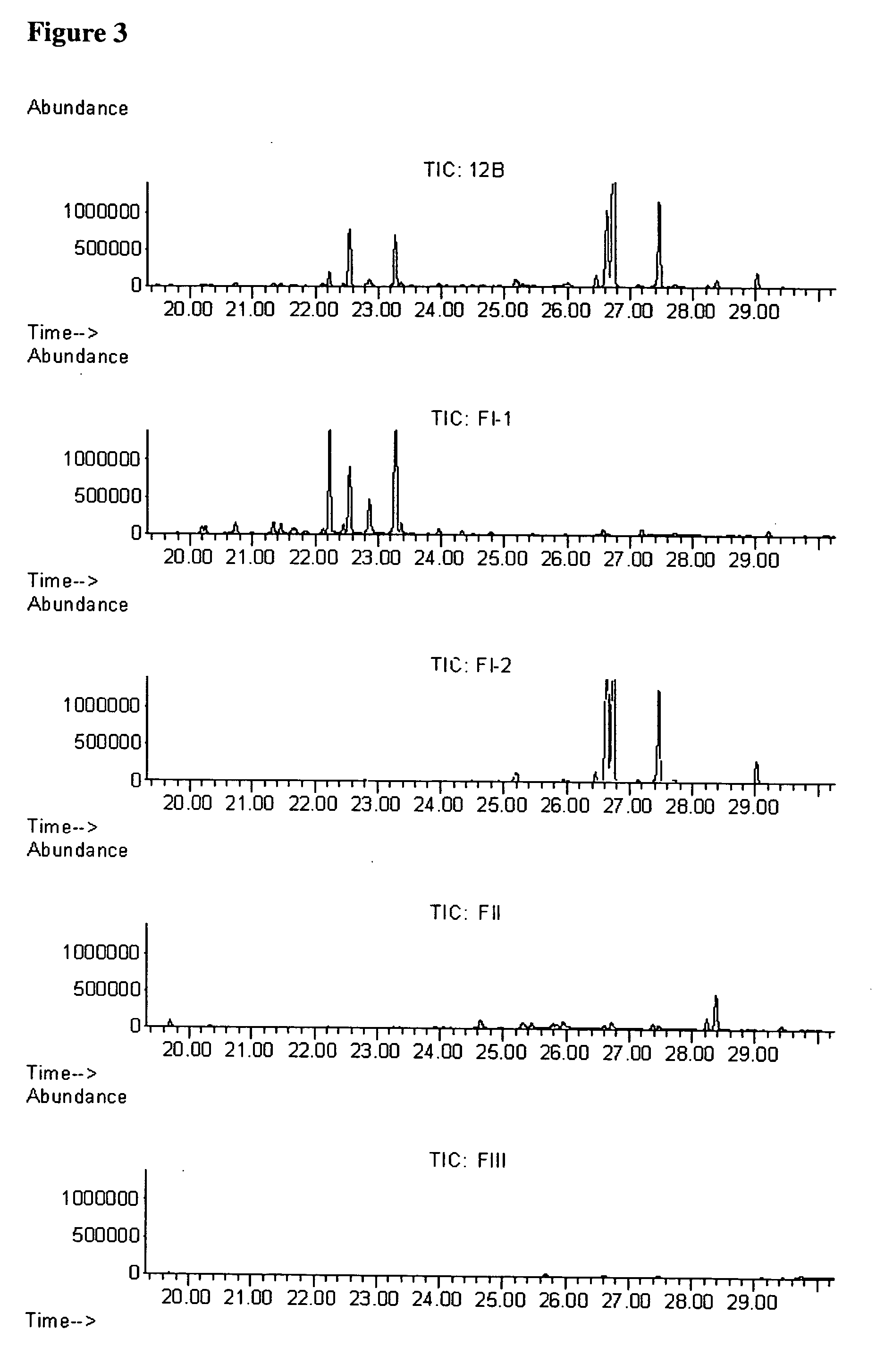Pest-impervious packaging material and pest-control composition
a packaging material and pest-impervious technology, applied in the direction of packaging, plant/algae/fungi/lichens ingredients, synthetic resin layered products, etc., can solve the problems of toxic to humans, inability to control the level of pest infestation of stored foodstuffs, and inability to control the level of pest infestation
- Summary
- Abstract
- Description
- Claims
- Application Information
AI Technical Summary
Benefits of technology
Problems solved by technology
Method used
Image
Examples
example 1
Turmeric Induced Insects' Repellence and Penetration Prevention
[0129] Materials and Methods:
[0130] Turmeric extracts: Powdered turmeric rhizomes (underground stems) were imported from India and Bangladesh. The rhizomes from India were purchased in the Israeli market and known as freshly imported rhizomes from India, the Bangladesh rhizomes were purposely imported from Allied Agro Industries, Baridhara, Dhaka in Bangladesh, One kilogram of the powder was extracted in Soxhlet extractors with petroleum ether (boiling point 40-60° C.) for 4 hours. The petroleum ether was removed in a rotary evaporator under reduced pressure to obtain the crude turmeric essential oil extract.
[0131] Additional turmeric essential oils were obtained from the USA (12A and 12B) and India (Suthar and Kancor). An oleoresin (E4) was obtained from India (Synthite in Cochin).
[0132] Insects: The test insects were adults of the lesser grain borer, Rhyzopertha dominica F. and the red flour beetle, Tribolium casta...
example 2
Turmeric Induced Insects' Repellency and Penetration Prevention
[0140] Materials and Methods:
[0141] ar-turmerone: S-(+)-ar-turmerone 80% was purchased from Botanix Limited, Kent, England.
[0142] Turmeric essential oil: Turmeric essential oils were obtained from the USA (12A and 12B).
[0143] Insects: The test insects were adults of the lesser grain borer Rhyzopertha dominica and the red flour beetle Tribolium castaneum (Herbst). Both species were reared on a mixture of broken wheat and 5% yeast (by weight). Cultures were kept at 27° C. and 65% R.H and the emerging adults were separated from rearing cultures at two-week intervals and were then held in pre-treatment jars at 27° C. and 65% R.H until they were 7-21 days old.
[0144] Thin layer chromatography (TLC): Samples of turmeric oils and extracts were spotted on a 20×20 cm pre-coated Alugram silica-gel aluminum backed plates with fluorescent UV indicator (Macherrey-Nagel, Germany). The plates were developed in 85:15 hexane:ethyl ac...
example 3
Biological Activities and GC / MS Analyses of Several Turmeric Essential Oils
[0171] Materials and Methods:
[0172] Turmeric essential oils: 12B, Cedar Vale, USA; 47, Sabinsa, India; 48, Exotic Naturals, India; 60, Henry Lamotte, Germany; 80, Galil Aroma, Israel; and 82, Galil Aroma, Israel.
[0173] Insects: As in Example 2 hereinabove.
[0174] Insect repellency, non-choice and choice bioassays: Bioassays were performed as described in Example 2 hereinabove.
[0175] GC / MS analysis: Analysis was performed as described in Example 2 above.
[0176] Results:
[0177] The insect repellency and penetration-prevention activities of several turmeric essential oil samples are shown in Table 6 below. All samples exhibited strong repellency capacity. GC / MS analyses of the turmeric essential oil samples are shown in Table 7 below.
TABLE 6Comparative insect repellency and penetration prevention activitiesof several turmeric essential oilsIn houseRepellencyChoiceNon-choicecodeSource of oil4test1 (%)test1 ...
PUM
| Property | Measurement | Unit |
|---|---|---|
| height | aaaaa | aaaaa |
| height | aaaaa | aaaaa |
| height | aaaaa | aaaaa |
Abstract
Description
Claims
Application Information
 Login to View More
Login to View More - R&D
- Intellectual Property
- Life Sciences
- Materials
- Tech Scout
- Unparalleled Data Quality
- Higher Quality Content
- 60% Fewer Hallucinations
Browse by: Latest US Patents, China's latest patents, Technical Efficacy Thesaurus, Application Domain, Technology Topic, Popular Technical Reports.
© 2025 PatSnap. All rights reserved.Legal|Privacy policy|Modern Slavery Act Transparency Statement|Sitemap|About US| Contact US: help@patsnap.com



